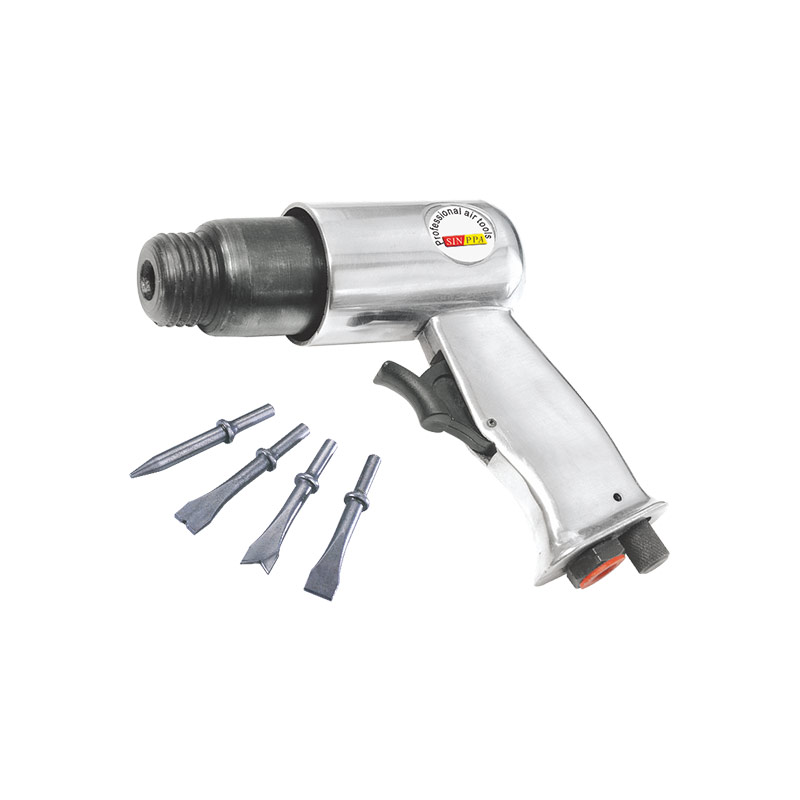What exactly is an air hammer? An air hammer, also called an air chisel, is basically a pneumatic force powered tool utilized to cut or carve materials out of stone, metal, and other hard-to-cut materials. It's designed to take a variety of different tools with it depending on the intended purpose. For example, while you are attempting to chip away at a piece of hardwood, an air hammer is more than capable of performing the task thanks to its air compression system.
The system uses compressed air to drive the tool forward and apply pressure onto the surface you are attempting to chip or cut. By applying pressure, the tool will scrape the material being chipped away, creating small dents in the surface upon contact. This is typically most effective when you are attempting to chip and smooth out rough wood, stone, or metal.
When using an air chipper, you'll want to use the finest quality wood, metal, or other material you can find. The smaller the piece being chipped away, the larger the dent you will create. The less you chip away from the actual surface of the object, the better the finish you will achieve.
When applying an air hammer to chipping or cutting tasks, be sure to wear protective gear. Air hammers can potentially be extremely dangerous, so wear goggles and other protection such as gloves, safety glasses, or even heavy-duty gloves if your job calls for that feature. This is also true if you are attempting to chip and cut a surface using a hammer without an air hammer. Air hammers transfer a lot of heat when they are in use, so wearing appropriate gear will prevent you from getting a badly burned hand or to increase the possibility of your chipping or cutting piece being damaged beyond repair.
When you begin chipping or cutting with an air hammer, the tool's compressed air is discharged into the air. Because of this, keep clear of the following potential problems: open flames, flammable liquids, electric sparks, and other things that could easily start a fire. It's also important to keep the area clean of all dust or debris before you begin chipping away. You do not want to drop your air hammer into a pile of dust or filth and cause the tool to become useless.
If you are chipping away at metal surfaces with an air hammer, it is important to keep the surrounding area clean of dust or debris. Your hand's compressed air may cause particles to fly through the air, thus creating more dirt and dust to collect. The faster the air out of the tool, the faster the collected dust and debris will be compressed. If the surrounding area looks like a desert, you are likely collecting a lot of dust and debris. Give the area a good vacuum and clean up the collected debris before proceeding with chipping away.
To begin chipping with an air hammer, release the compressed air from the tool into the air and begin chopping. Maintain eye contact with the dust as you move it across the surface. Do not look down at the surface as you are chipping. You can have the tendency to chip at the dust as you are moving it, leading to an inadvertent error in your cut. Do not move the tool too fast as you are chipping. A slow but steady pace will help prevent errors.
As an alternative to the traditional hammer, many electricians are using an air hammer. This tool is very handy, easy to use, portable, and available at an affordable price. An air hammer doesn't require any moving parts, which makes it safe for any professional, novices or hobbyists. With this tool, you can finish dusting projects in a matter of minutes instead of hours.




